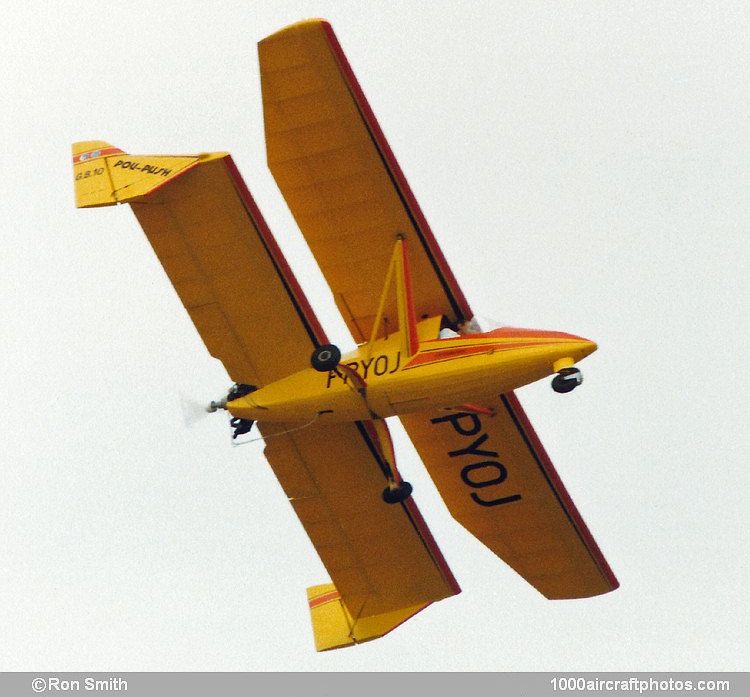Type: Single-seat tandem-wing light aircraft.
Wings: Forward wing comprises two strut-braced semi-span structures which could be varied independently in incidence for roll control and collectively for pitch control. NACA 25000 series wing section. Slight dihedral from roots. Each half-span was made up of a main box spar with spruce booms and okoumé plywood webs, forming a D leading edge torsion box with plywood skin; spruce trellis ribs; an auxiliary rear spar; and over-all fabric covering. Trim tab in inboard trailing edge of each half-span. Rear wing, of similar section and construction, was fixed, except for a wide-span central flap which deflects only upward to increase rate of descent.
Fuselage: All-wood box structure of okoumé plywood over spruce frames and longerons. Lower surface fabric covered. Top decking and nose cone of composites.
Tail unit: Triangular endplate fin at each tip of rear wing, with independent horn balanced rudder that deflected only outward and was returned to a neutral position by a spring. Structures of wood with fabric covering.
Landing gear: Non-retractable tricycle type, with single wheel on each unit. One-piece cantilever arch structure of composites carried main wheels, with sprung wire bracing. Duralumin nose wheel fork was carried on a composites spring. Friction pad brake on steerable nose wheel. Wire guard under rear fuselage to protect propeller and rudders in taildown attitude.
Power plant: A 30 hp Hirth 276R air-cooled two-cylinder in-line two-stroke engine, driving directly a two-blade wooden fixed-pitch pusher propeller, diameter 2 ft 11.5 in (0.90 m). Fuel comprised petroleum/oil (3-5%) mixture in composites tank on CG, capacity 10 gal (38 l).
Accommodation: Single seat in enclosed cockpit, under one-piece removable transparent canopy. Control by conventional stick and rudder pedals.
Systems: Electrical system included 12V generator on engine for starting, and 12V 14A battery inside removable nose cone.
